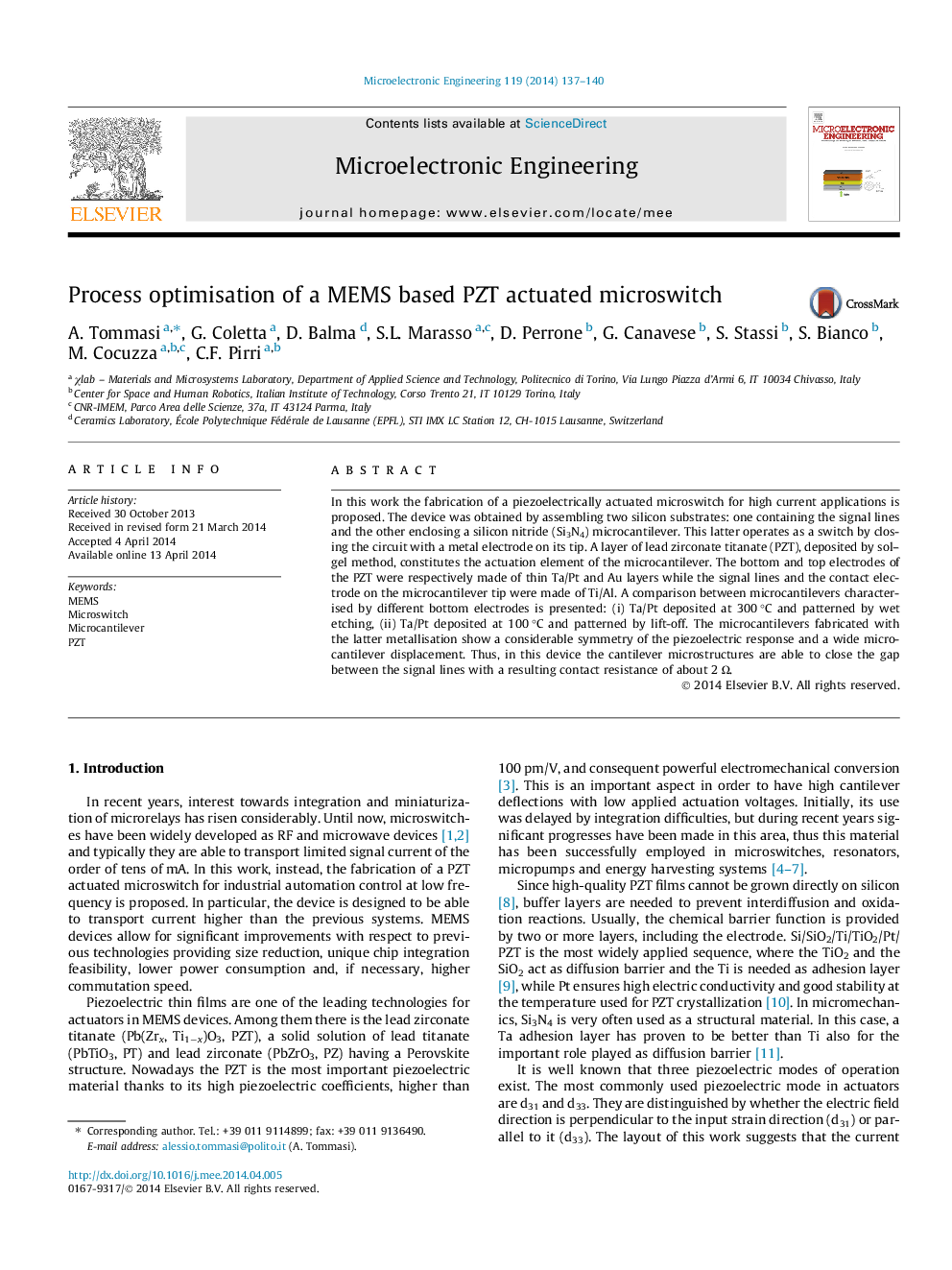| Article ID | Journal | Published Year | Pages | File Type |
|---|---|---|---|---|
| 542614 | Microelectronic Engineering | 2014 | 4 Pages |
•The optimised fabrication process for a PZT actuated microswitch was developed.•A comparison between standard ad optimised process was carried out.•The actuation properties of the device were evaluated.•The optimised process improves the piezoelectric response.•Actuating the device a resistance switch from 1 kΩ to 2 Ω was observed.
In this work the fabrication of a piezoelectrically actuated microswitch for high current applications is proposed. The device was obtained by assembling two silicon substrates: one containing the signal lines and the other enclosing a silicon nitride (Si3N4) microcantilever. This latter operates as a switch by closing the circuit with a metal electrode on its tip. A layer of lead zirconate titanate (PZT), deposited by sol–gel method, constitutes the actuation element of the microcantilever. The bottom and top electrodes of the PZT were respectively made of thin Ta/Pt and Au layers while the signal lines and the contact electrode on the microcantilever tip were made of Ti/Al. A comparison between microcantilevers characterised by different bottom electrodes is presented: (i) Ta/Pt deposited at 300 °C and patterned by wet etching, (ii) Ta/Pt deposited at 100 °C and patterned by lift-off. The microcantilevers fabricated with the latter metallisation show a considerable symmetry of the piezoelectric response and a wide microcantilever displacement. Thus, in this device the cantilever microstructures are able to close the gap between the signal lines with a resulting contact resistance of about 2 Ω.
Graphical abstractFigure optionsDownload full-size imageDownload as PowerPoint slide
